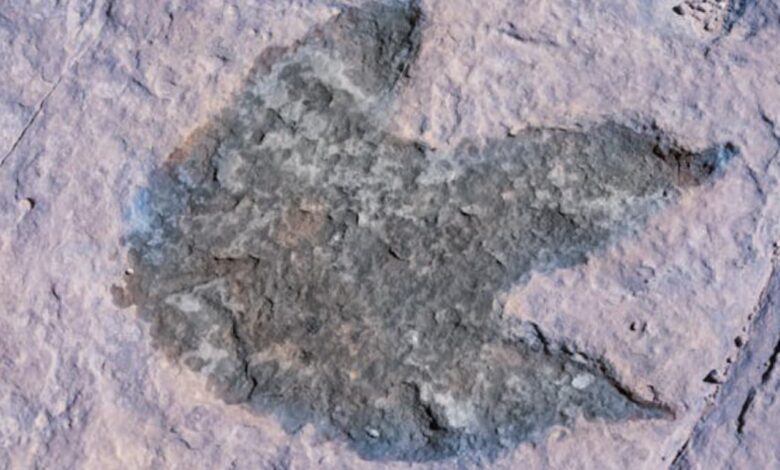Young girl discovers dinosaur footprints on beach in South Wales

When 10-year-old Tegan walked along a beach in South Wales with her mother, she didn’t expect to make a prehistoric discovery. To their surprise, Tegan spotted five large dinosaur footprints in the rocks. The footprints, estimated to be over 200 million years old, have been identified as belonging to a Camelotia, a type of herbivorous dinosaur from the late Triassic.
Discovery and expert analysis
Tegan and her mother, Claire, were on a summer beach walk at Lavernock Point in the Vale of Glamorgan, a region renowned for its prehistoric significance. After spotting the footprints, Claire took photographs and contacted the National Museum Wales. Cindy Howells, the curator of palaeontology at the National Museum Wales, told the BBC‘s The Dinohunters program, she examined the images and confirmed that the footprints were indeed those of a dinosaur. She noted the consistent fit pattern on the prints, indicating that they were made by a large dinosaur, likely a sauropodomorph.
Significance of the find
This discovery is significant because it adds to the growing list of dinosaur discoveries in Wales. The region has previously yielded other significant finds, including the 2014 discovery of Dracoraptor hanigani, a carnivorous dinosaur. The footprints Tegan found suggest that Wales was once home to a variety of dinosaurs, providing valuable insights into the prehistoric era.
What is a Camelotia?
Camelotia, a member of the sauropodomorph family, is not as well known as other dinosaurs such as the stegosaurus or T-rex. This dinosaur was probably about 3 meters high and 4-5 meters long. The footprints Tegan discovered offer a rare glimpse into the lives of these ancient creatures.
Wales as a hotspot for dinosaurs
Cindy Howells stressed that Wales, once a hot desert during the Triassic, has become a crucial location for dinosaur research. The region’s continuous record of dinosaur tracks and fossils reinforces its importance for understanding prehistoric life.
Tegan’s discovery is an example of how amateur enthusiasts can make a significant contribution to scientific knowledge, as their findings can sometimes lead to major breakthroughs in understanding our planet’s distant past.




